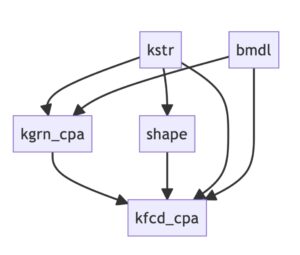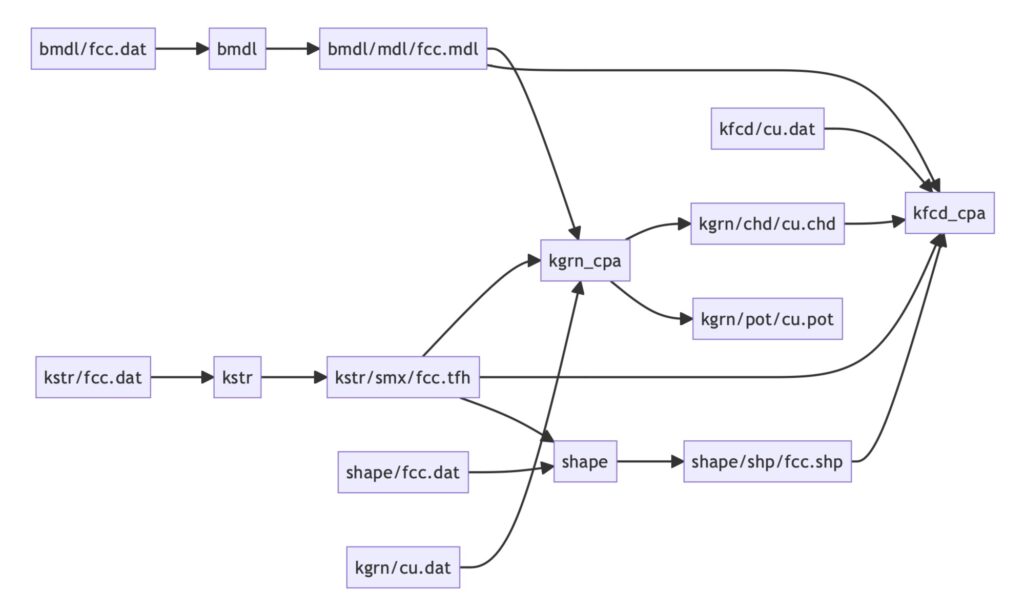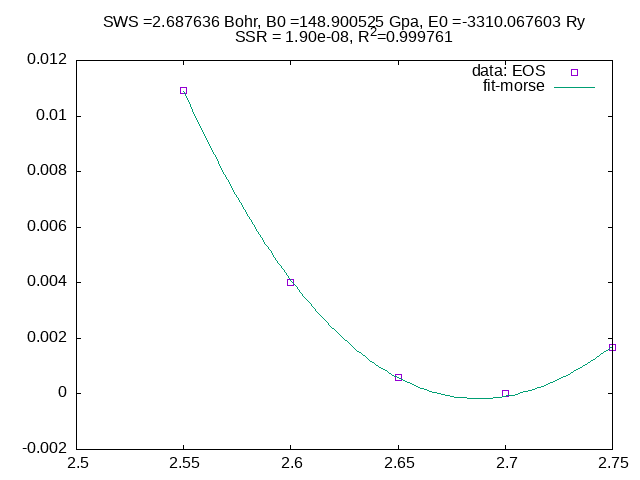This tutorial is written by Wei Li.
This EMTO tutorial is meant for new users of EMTO and only focus on “how”. If you are interested with the theory behind EMTO-CPA code please reading the Book by Professor Levente Vitos (find link below).
EMTO-CPA is an all-electron density functional theory code based on using the Exact Muffin-Tin Orbitals (EMTO) formalism used in materials science to represent the single-electron wave functions for the optimised overlapping muffin-tin (OOMT) potential. The total energy is calculated with the Full Charge Density (FCD) technique.
This combination makes the code nearly as accurate as the full-potential methods, but still keeps its computational efficiency. It also incorporates the Coherent Potential Approximation (CPA) to handle the effects of chemical and magnetic disorder. EMTO-CPA code was created at KTH Royal Institute of Technology in Stockholm by Prof. Levente Vitos and his co-workers since 2000. It has been widely used to explore and design complex alloy systems, especially stainless steels and high entropy alloys (HEA) / Multi-Principal Element Alloys (MPEA).
ENCCS currently provides support and contributes to the development under EMTO’s license through a proof of concept (POC) project.
Goal of this tutorial
- Run the code.
- Get equation of state of FCC Cu.
Links
- EMTO official webpage: emto.gitlab.io
- Manual: https://emto.gitlab.io/manual/manual.html
- Book by Prof. Levente Vitos: Computational Quantum Mechanics for Materials Engineers
Units:
• length: Bohr
• energy: Rydberg
Wigner–Seitz Radius
EMTO input file follows a very strict format, even one extra space may causes problems. Please use replace in the editor when you manually modify the input values.
EMTO Subprograms & Execution Dependency
Executables with detailed input/output files
| exe | function |
|---|---|
| bmdl | Calculates the Madelung potentials |
| kstr | Computes the energy dependent slope matrix in real space. |
| shape | Computes the so called shape function, which transforms any integral over the unit cell into an integral over a sphere surrounding the unit cell. |
| kgrn_cpa | Solves the actual self-consistent Kohn-Sham equations And calculate the Full charge density |
| kfcd_cpa | Evaluate the total energy functional from the full charge density generated by kgrn |

Example: FCC Cu

Run the Subprograms
Prepare your inputs like below: (create the folders and copy the dat file into them)
tree
.
├── bmdl
│ ├── fcc.dat
│ └── mdl/
├── kfcd
│ └── cu.dat
├── kgrn
│ ├── chd/
│ ├── cu.dat
│ └── pot/
├── kstr
│ ├── fcc.dat
│ └── smx/
└── shape
├── fcc.dat
└── shp/
10 directories, 5 filesexe < inp.date.g. in the kstr folder.
kstr < fcc.datRun each emto subprogram following the dependency shown in section Execution Flow above.
You will get all outputs as below:
tree
.
├── bmdl
│ ├── fcc.dat
│ ├── fcc.prn
│ └── mdl
│ └── fcc.mdl
├── kfcd
│ ├── cu.dat
│ └── cu.prn
├── kgrn
│ ├── chd
│ │ └── cu.chd
│ ├── cu.dat
│ ├── cu.prn
│ └── pot
│ ├── cu.atm
│ ├── cu.pot
│ └── cu.zms
├── kstr
│ ├── fcc.dat
│ ├── fcc.prn
│ └── smx
│ └── fcc.tfh
└── shape
├── fcc.dat
├── fcc.prn
└── shp
└── fcc.shp
10 directories, 17 filesExtract Useful Information
Check the Convergence
cd kgrnIn the cu.dat the energy tolerance is set to TOLE...= 1.d-07, and tolerance for Fermi level is set to TOLEF.= 1.d-07 (line#23).
grep -n TOLE cu.dat
23:TOLE...= 1.d-07 TOLEF.= 1.d-07 TOLCPA= 1.d-06 TFERMI= 500.0 (K)Let’s check if the calculation reaches the criteria.
grep erren cu.prnoutput
KGRN: Iteration no. 1 Etot = -103.063287 erren = 1.00000000
KGRN: Iteration no. 2 Etot = -102.857445 erren = 0.20584215
KGRN: Iteration no. 3 Etot = -102.856273 erren = 0.00117217
KGRN: Iteration no. 4 Etot = -102.856379 erren = 0.00010572
KGRN: Iteration no. 5 Etot = -102.856351 erren = 0.00002778
KGRN: Iteration no. 6 Etot = -102.856288 erren = 0.00006265
KGRN: Iteration no. 7 Etot = -102.856909 erren = 0.00062120
KGRN: Iteration no. 8 Etot = -102.857487 erren = 0.00057781
KGRN: Iteration no. 9 Etot = -102.858399 erren = 0.00091236
KGRN: Iteration no. 10 Etot = -102.858455 erren = 0.00005586
KGRN: Iteration no. 11 Etot = -102.858537 erren = 0.00008201
KGRN: Iteration no. 12 Etot = -102.858552 erren = 0.00001434
KGRN: Iteration no. 13 Etot = -102.858553 erren = 0.00000134
KGRN: Iteration no. 14 Etot = -102.858553 erren = 0.00000025
KGRN: Iteration no. 15 Etot = -102.858553 erren = 0.00000007
KGRN: Iteration no. 16 Etot = -102.858553 erren = 0.00000000
KGRN: Iteration no. 17 Etot = -102.858553 erren = 0.00000001
KGRN: Iteration no. 18 Etot = -102.858553 erren = 0.00000001
KGRN: Iteration no. 19 Etot = -102.858553 erren = 0.00000001grep erref cu.prnoutput
Dyson loops 32 EF = -0.078518 erref = 0.07575668
Dyson loops 32 EF = -0.080007 erref = 0.18907543
Dyson loops 32 EF = -0.083393 erref = 0.03030721
Dyson loops 32 EF = -0.085897 erref = 0.00272249
Dyson loops 32 EF = -0.088113 erref = 0.00236061
Dyson loops 32 EF = -0.090461 erref = 0.00229151
Dyson loops 32 EF = -0.092218 erref = 0.00199204
Dyson loops 32 EF = -0.093602 erref = 0.00140372
Dyson loops 32 EF = -0.092772 erref = 0.00065422
Dyson loops 32 EF = -0.092529 erref = 0.00056859
Dyson loops 32 EF = -0.092504 erref = 0.00005250
Dyson loops 32 EF = -0.092498 erref = 0.00000803
Dyson loops 31 EF = -0.092499 erref = 0.00000015
Dyson loops 23 EF = -0.092497 erref = 0.00000142
Dyson loops 26 EF = -0.092497 erref = 0.00000013
Dyson loops 12 EF = -0.092498 erref = 0.00000037
Dyson loops 15 EF = -0.092498 erref = 0.00000028
Dyson loops 21 EF = -0.092498 erref = 0.00000011
Dyson loops 24 EF = -0.092498 erref = 0.00000003Let’s check the number of states (NOS) up to Fermi Level is close to the number of total valence electrons in the unit cell. For our calculation, one Cu atom in the unit cell should have 11 Valence electrons.
grep NOS cu.prn
KKRFCD: NOS(Ef) = 11.000000 ELT = 11.000000
KKRFCD: NOS(Ef) = 11.000000 ELT = 11.000000Get Total Energy
Most importance results should be the energy, and lets change to kfcd directory and extract them.
cd kfcdgrep TOT- cu.prn
TOT-LDA -102.846730 (Ry) -102.846730 (Ry/site) S= 2.686842 Bohr
TOT-PBE -102.559347 (Ry) -102.559347 (Ry/site) S= 2.686842 Bohr
TOT-P07 -102.554000 (Ry) -102.554000 (Ry/site) S= 2.686842 Bohr
TOT-AM5 -102.550405 (Ry) -102.550405 (Ry/site) S= 2.686842 Bohr
TOT-LAG -102.693623 (Ry) -102.693623 (Ry/site) S= 2.686842 BohrNow we get different total energies with different exchange correlation approximations.S= 2.686842 Bohr shows that we set the average Wigner-Seitz radius in kgrn input file (line#24): SWS......=2.686842.
grep -n SWS kgrn/cu.dat
24:SWS......=2.686842 NSWS.= 1 DSWS..= 0.05 ALPCPA= 0.6020Equation of State (EOS)
We need to get curve of SWS (\omega) vs. energy (E), and fit the curve with Morse function:
E(\omega)=a+be^{-\lambda\omega}+ce^{-2\lambda\omega}EMTO input file follows a very strict format, even one extra space may causes problem. Please use replace in the editor when you manually modify the input values.
Let’s create 5 kgrn input files with different SWS values (also with different JOBNAM):
Make sure kgrn calculations use Soft-Core approximation: SOFC.= Y.
for i in $(seq 2.55 0.05 2.75)
do
sws=$(printf %10.8f $i)
sed -E -e "s/(^SWS\.*)=.{10}/\1=$sws/" \
-e "s/JOBNAM=.*/JOBNAM=cu$sws/" cu.dat > cu$sws.dat
doneLet’s check:
egrep '(JOBNAM)|(^SWS)' cu?*.datoutput
cu2.55000000.dat:JOBNAM=cu2.55000000
cu2.55000000.dat:SWS......=2.55000000 NSWS.= 1 DSWS..= 0.05 ALPCPA= 0.6020
cu2.60000000.dat:JOBNAM=cu2.60000000
cu2.60000000.dat:SWS......=2.60000000 NSWS.= 1 DSWS..= 0.05 ALPCPA= 0.6020
cu2.65000000.dat:JOBNAM=cu2.65000000
cu2.65000000.dat:SWS......=2.65000000 NSWS.= 1 DSWS..= 0.05 ALPCPA= 0.6020
cu2.70000000.dat:JOBNAM=cu2.70000000
cu2.70000000.dat:SWS......=2.70000000 NSWS.= 1 DSWS..= 0.05 ALPCPA= 0.6020
cu2.75000000.dat:JOBNAM=cu2.75000000
cu2.75000000.dat:SWS......=2.75000000 NSWS.= 1 DSWS..= 0.05 ALPCPA= 0.6020Finished these kgrn calculations:
ls cu?*.dat | xargs -P 5 -I {} bash -c "time kgrn_cpa < {}"check the output:
egrep '(Converged)|(NOS)|(finished)' cu?*.prnoutput
cu2.55000000.prn: Converged in 19 iterations at 22:05 09-Nov-23
cu2.55000000.prn: KKRFCD: NOS(Ef) = 11.000000 ELT = 11.000000
cu2.55000000.prn: KKRFCD: NOS(Ef) = 11.000000 ELT = 11.000000
cu2.55000000.prn: KGRN calculation finished at 22:05 on 09-Nov-23
cu2.60000000.prn: Converged in 19 iterations at 22:05 09-Nov-23
cu2.60000000.prn: KKRFCD: NOS(Ef) = 11.000000 ELT = 11.000000
cu2.60000000.prn: KKRFCD: NOS(Ef) = 11.000000 ELT = 11.000000
cu2.60000000.prn: KGRN calculation finished at 22:05 on 09-Nov-23
cu2.65000000.prn: Converged in 19 iterations at 22:05 09-Nov-23
cu2.65000000.prn: KKRFCD: NOS(Ef) = 11.000000 ELT = 11.000000
cu2.65000000.prn: KKRFCD: NOS(Ef) = 11.000000 ELT = 11.000000
cu2.65000000.prn: KGRN calculation finished at 22:05 on 09-Nov-23
cu2.70000000.prn: Converged in 20 iterations at 22:05 09-Nov-23
cu2.70000000.prn: KKRFCD: NOS(Ef) = 11.000000 ELT = 11.000000
cu2.70000000.prn: KKRFCD: NOS(Ef) = 11.000000 ELT = 11.000000
cu2.70000000.prn: KGRN calculation finished at 22:05 on 09-Nov-23
cu2.75000000.prn: Converged in 19 iterations at 22:05 09-Nov-23
cu2.75000000.prn: KKRFCD: NOS(Ef) = 11.000000 ELT = 11.000000
cu2.75000000.prn: KKRFCD: NOS(Ef) = 11.000000 ELT = 11.000000
cu2.75000000.prn: KGRN calculation finished at 22:05 on 09-Nov-23Now you should notice that, we do not need to calculate the bmdl,kstr and shape again for FCC lattice with different volume.
Let’s create 5 kfcd input files with different JOBNAM (in kfcd directory):
for i in $(seq 2.55 0.05 2.75)
do
sws=$(printf %10.8f $i)
sed -E -e "s/(JOBNAM.*)=.*/\1=cu$sws/" cu.dat > cu$sws.dat
doneFinished these kfcd calculations:
ls cu?*.dat | xargs -P 5 -I {} bash -c "time kfcd_cpa < {}"check the output:
egrep 'Finished' cu?*.prnoutput
cu2.55000000.prn: KFCD: Finished at: 09-Nov-23 22:41
cu2.60000000.prn: KFCD: Finished at: 09-Nov-23 22:41
cu2.65000000.prn: KFCD: Finished at: 09-Nov-23 22:41
cu2.70000000.prn: KFCD: Finished at: 09-Nov-23 22:41
cu2.75000000.prn: KFCD: Finished at: 09-Nov-23 22:41prepare data for Morse EOS fitting (choose PBE functional here):
grep TOT-PBE cu?*.prn
cu2.55000000.prn: TOT-PBE -3310.056503 (Ry) -3310.056503 (Ry/site) S= 2.550000 Bohr
cu2.60000000.prn: TOT-PBE -3310.063412 (Ry) -3310.063412 (Ry/site) S= 2.600000 Bohr
cu2.65000000.prn: TOT-PBE -3310.066848 (Ry) -3310.066848 (Ry/site) S= 2.650000 Bohr
cu2.70000000.prn: TOT-PBE -3310.067436 (Ry) -3310.067436 (Ry/site) S= 2.700000 Bohr
cu2.75000000.prn: TOT-PBE -3310.065767 (Ry) -3310.065767 (Ry/site) S= 2.750000 BohrFit Morse function with the 8th and 5th column:

Apart from EMTO and materials science, ENCCS produces short tutorials on multiple topics related to supercomputing and its use cases. Check other tutorials here.








